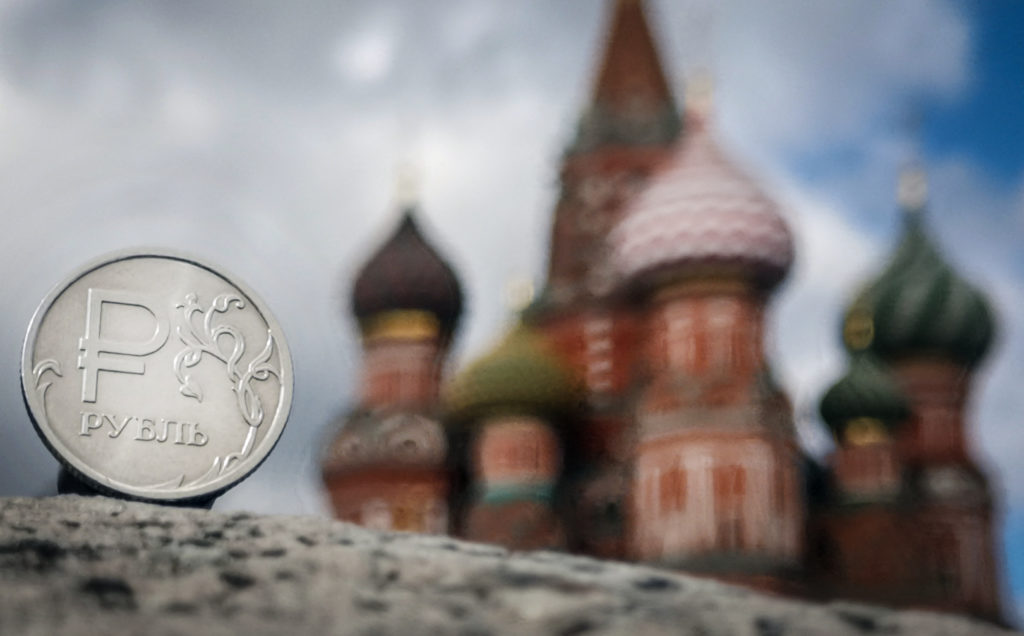Russia’s central bank reduced its key interest rate by one percentage point to 17% on Friday, a move aimed at providing some relief to the economy as growth decelerates amid rising military expenditures that are widening the budget deficit.
The rate had previously been raised to 21% to combat inflation, but policymakers are now easing amid growing concerns from business leaders and lawmakers about the impact of high borrowing costs on economic activity.
Despite the rate cut, inflation remains a concern. The central bank reported that price increases slowed slightly in July and August but remain high at 8.2%. It also noted that inflation expectations have remained largely unchanged in recent months, which could hinder efforts to achieve a sustained decline in inflation.
This divergence—between lowering interest rates and persistent inflationary pressures—highlights the strain within Russia’s wartime economy.
While the central bank focuses on price stability, the finance ministry continues injecting funds into the economy through defense contracts and military recruitment incentives. These expenditures have driven wage growth and economic activity since the beginning of the conflict over three and a half years ago, but they have also contributed to inflation.
Economic growth slowed to 1.1% year-on-year in the second quarter, down from 1.4% in the first quarter and 4.5% at the end of the previous year. On a quarterly basis, the economy contracted by 0.6%, signaling a loss of momentum in recent months.
The budget deficit reached 4.9 trillion rubles ($58 billion) between January and July, a significant increase from 1.1 trillion rubles during the same period last year. Spending reached 129% of the planned amount, according to the Kyiv School of Economics, which monitors Russia’s economy and energy revenues. Meanwhile, oil and gas revenues dropped by 19% compared to the previous year, partly due to weaker global oil prices.
Despite Western sanctions that have restricted foreign investment and cut off access to European gas markets, Russia’s economy has proven more resilient than initially expected. Unemployment is at historic lows, and household incomes are rising, partly due to recruitment bonuses that have directed funds into economically disadvantaged regions. Oil exports have remained stable despite price fluctuations.
The government is financing the growing deficit by issuing ruble-denominated bonds to domestic banks, which are eager buyers given expectations of further rate cuts in the future.
— news from PBS
— News Original —
Russia cuts interest rate to 17% as wartime economy slows while deficit grows
Russia’s central bank cut its benchmark interest rate Friday by one percentage point to 17%, a step that could support the economy as growth slows and spending on the war against Ukraine increases the budget deficit. n nThe bank had raised its key rate as high as 21% to combat inflation, but has begun to retreat amid complaints from business leaders and legislators about their impact on economic activity. n nThe bank’s inflation warnings in its policy statements underlined the stresses in the Kremlin’s wartime economy. n nThe bank noted that inflation eased somewhat in July and August but remains elevated at 8.2%. Still, it warned that “inflation expectations have not changed considerably in recent months.” n n“In general, they remain elevated,” the bank said. “This may impede a sustainable slowdown in inflation.” n nThe contrast between a rate cut and continued inflation warnings reflects serious frictions in the Russian economy. n nThe central bank is focused on containing prices. Yet the finance ministry is pumping money into the economy in the form of defense orders and military recruitment bonuses that have fueled growth, wages and inflation over the course of Russia’s 3 1/2 year war against Ukraine. n nYear over year growth slowed to 1.1% in the second quarter from 1.4% in the first quarter and from 4.5% at the end of last year. Compared to the quarter before, however, the second quarter figure was a negative 0.6%, indicating the economy has lost speed in recent months. n nThe deficit increased to 4.9 trillion rubles ($58 billion) in the January-July period, up from 1.1 trillion rubles the year before. Spending was 129% of the planned amount, according to the Kyiv School of Economics, which tracks the Russian economy and oil revenues. Meanwhile oil and gas revenues fell 19% compared with the year earlier period, in part due to slack global oil prices. n nDespite sanctions that have deprived Russia of foreign investment in some industries and the loss of its natural gas sales to Europe, the economy has held up better than many expected at the start of the war. Unemployment is at record lows and household incomes are rising. Recruitment bonuses have pumped cash into poorer regions. Oil shipments have remained steady even as the price has fluctuated. n nMeanwhile the government is able to finance its deficit by selling ruble bonds to domestic banks, which are eager to buy the bonds because they anticipate that interest rates will continue to fall.
